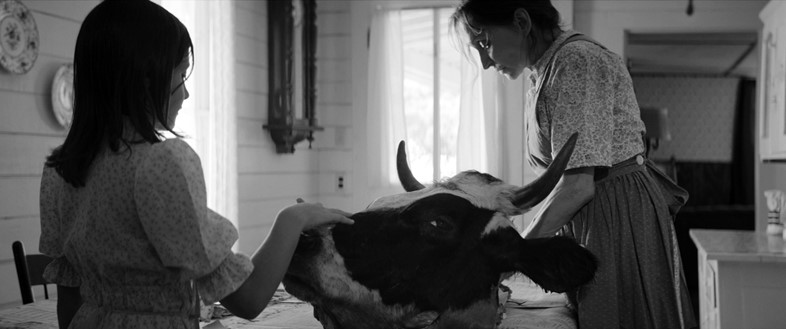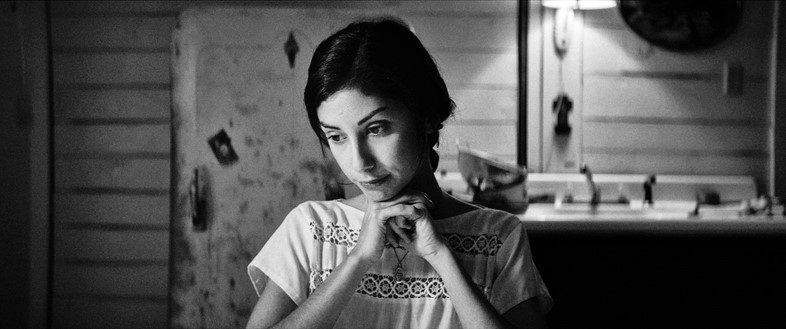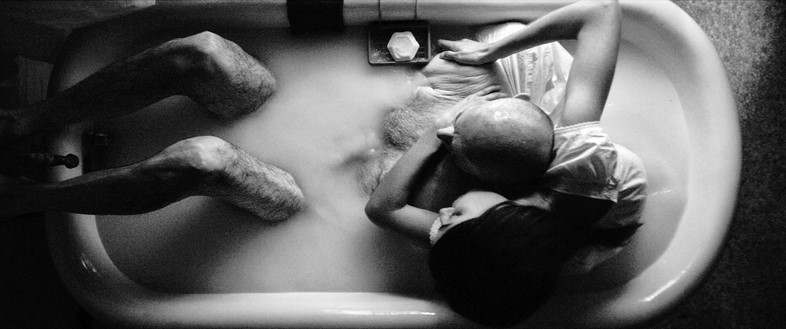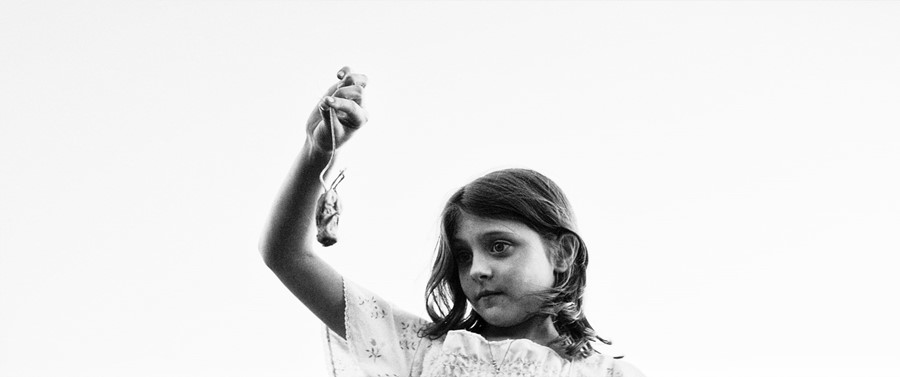We sit down with American director Nicolas Pesce to discuss The Eyes of My Mother, his accomplished debut feature that channels Lynch, Hitchcock and more
27-year-old American director Nicolas Pesce is a man preoccupied by alternate realities. He credits David Lynch, doyen of surrealist cinema, with inspiring his decision to become a filmmaker. “I saw Mulholland Drive and remember thinking, ‘This looks likes a normal movie but there is nothing normal about it,’” he explains, talking after a screening of his first feature film, the highly artful and equally disturbing The Eyes of My Mother during last year’s BFI London Film Festival. “Lynch manipulates reality to give a vague impression of life but there’s always something off about it in a very specific, unsettling way that is unique to him. Watching that film was when I realised that how much control directors have over what reality feels like for the duration of a movie; it’s godlike in a way.”
For his debut offering – which arrives in UK cinemas today – Pesce has created an alternative universe all of his own, using details from his own life as a springboard. It is the story of Francisca, a young girl born to a god-fearing, Portuguese mother and provincial American father, whose quiet, rural childhood in the midwest is shattered when a sinister stranger forces his way into her family home and changes the course of her life indefinitely. As she grows older, isolation and loneliness give way to chilling perversions, her actions becoming increasingly erratic and blood curdling over the course of the film’s 75-minute duration.

Right from the start, however, there is gore aplenty; in the opening minutes, Francisca’s mother, a former eye surgeon, cuts off a cow’s head and plonks it on the kitchen table, dissecting its eye by means of a biology lesson for her small, prairie-dress-clad daughter. The scene is a direct reference to Pesce’s own childhood. “My mum is an eye surgeon too,” he explains, “and also brought home cow’s heads for me to dissect. She is Sicilian though, not Portuguese, but her new wavey, polytheistic approach to Catholicism is similar. It’s a western European thing, I think.” One day a few years ago, Pesce was discussing his somewhat unorthodox but happy upbringing with his friend, fellow director Josh Mond, when a thought crossed his mind: what if his mother had died when he was young, leaving him, in his words, “to create my own context for why she wanted me to know all of this stuff, and how I should use it? I realised that that could potentially take someone down a distinctly dark path, and that’s how the film began.”
Much like Lynch, Pesce cultivates an idiosyncratic, otherworldly environment for his characters to exist in. The film is immaculately shot in an austere monochrome palette, sapping all the light and life from the idyllic pastoral hills among which it’s set, and casting Francisca’s whitewashed, rosary-strewn farmhouse in a distinctly eerie, American Gothic light. “I decided fairly early on to shoot in black and white,” the director says. “Partially to pay homage to the 1950s and 60s horror films I was raised on, like all the William Castle and Vincent Price movies, Night of the Hunter and so on – and also to give the film an expressionistic feel. It’s stark and cold, and that’s how I feel Francisca sees the world.”

Pesce’s leading lady, Portuguese actress Kika Magalhaes – with whom he had previously collaborated while working as a music video director – is similarly preternatural, her awkward yet graceful movements and detached facial expressions casting a powerful spell on screen. “Kika really existed before the movie did,” Pesce expands. “She’s naturally odd and very captivating in how she talks and carries herself; that’s why Francisca [who frequently murmurs to herself frantically in Portuguese] is Portuguese rather than Italian.”
While our delicate protagonist’s descent into darkness will terrorise even the most staunch of fright film fans, it is in fact what we don’t see, or occasionally don’t hear – the screech of a saw echoing from a hidden bathroom; the uttering of a silent scream – that turns out to be the most ghastly. “I think the audience is way better at scaring themselves than any filmmaker is,” Pesce explains of this Hitchcockian approach. “For the most part, fear is an abstract thing that we create for ourselves so if you ask the audience a question and let them answer it in a way that relates to them, that is often the most effective way of frightening them.”

He similarly channels the master of suspense in terms of the psychological complexity of his villain (viewers won’t fail to notice certain similarities between the film and Hitchcock’s Psycho) and how she became that way. “You have to sometimes feel for her; you have to sometimes be disgusted by her, and often both at once. She’s not just this cold killer; she’s violent out of a desire to cure her loneliness. I’m in no way justifying it but she does a lot of this fucked up stuff out of love, however twisted it is.” In this sense, Pesce’s film is particularly stirring; yes, it’s brutal and torturous but it’s also haunting and melancholy – an esoteric musing on the blackest, bleakest repercussions of isolation and trauma that firmly establishes Pesce as a storytelling force to be reckoned with. Indeed, the director tells me, among its very few bad reviews, one attempted to slam it as “Texas Chainsaw meets [Pedro] Almodóvar,” which, he chuckles gleefully, is “exactly what I was going for”.
The Eyes of My Mother is in cinemas nationwide from March 24, 2017.
